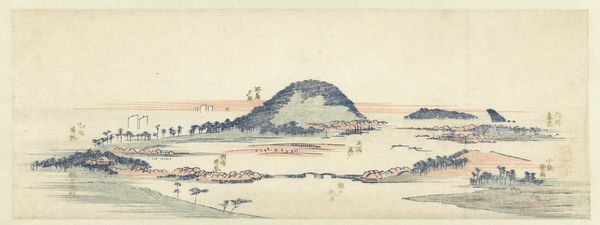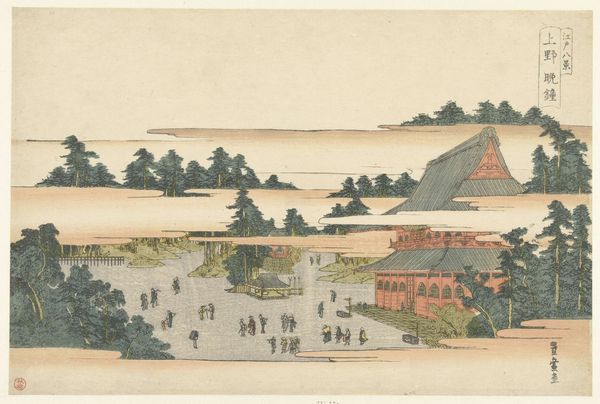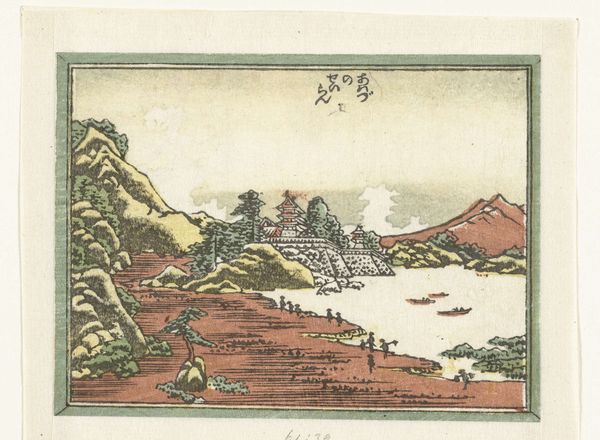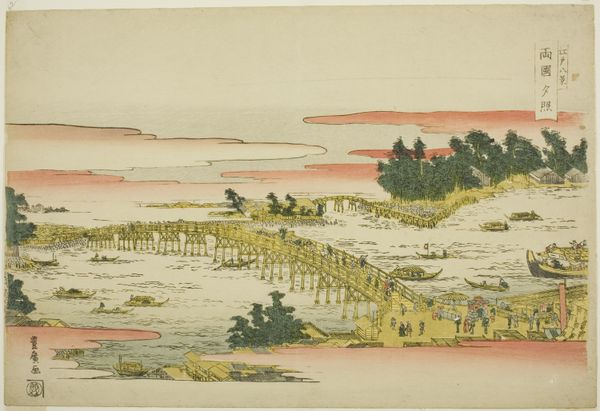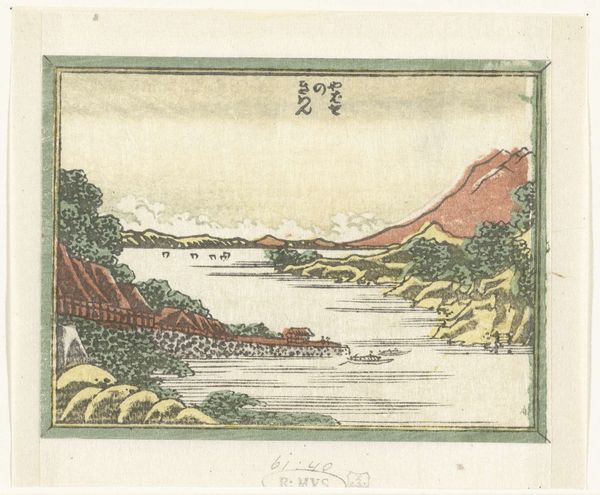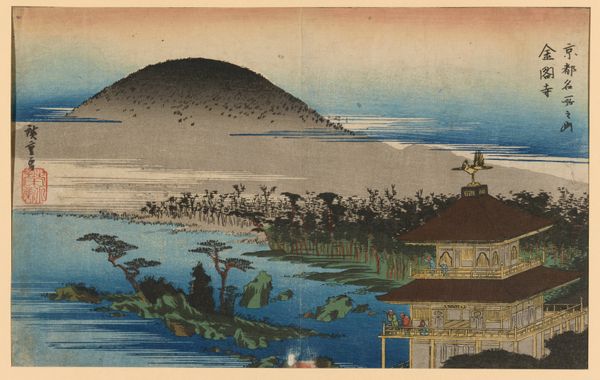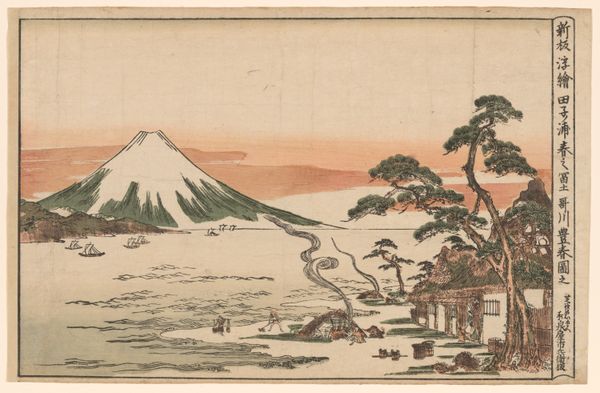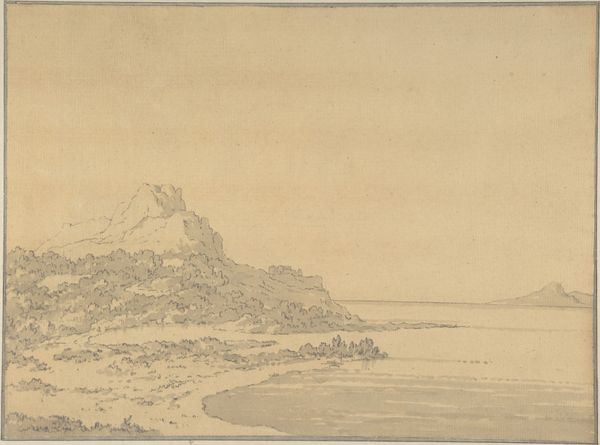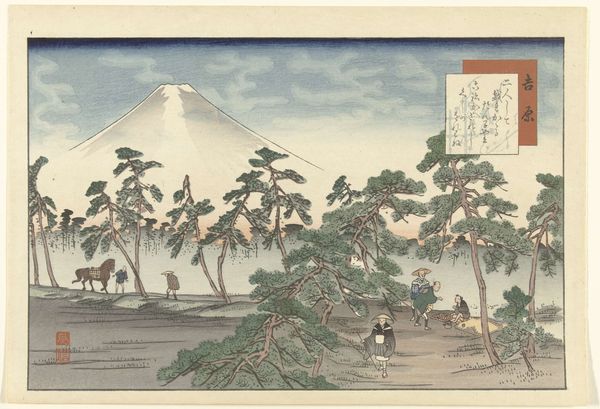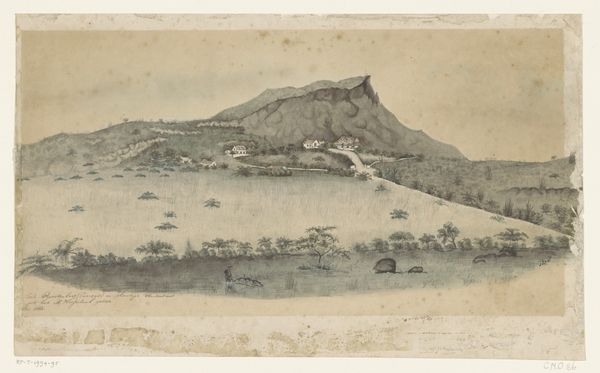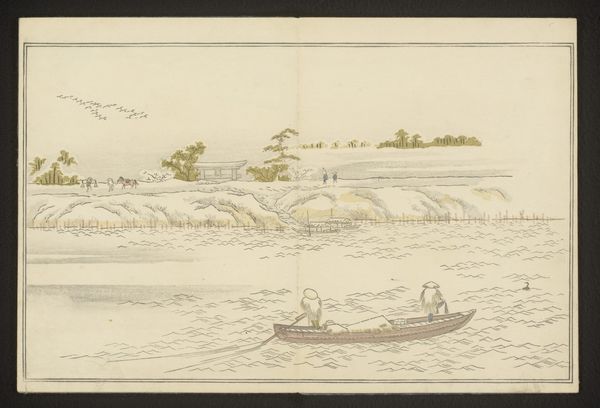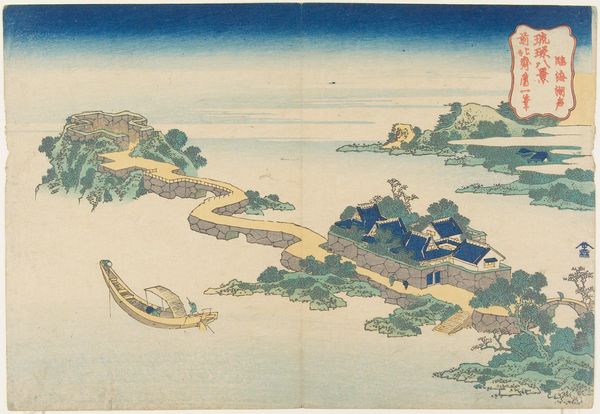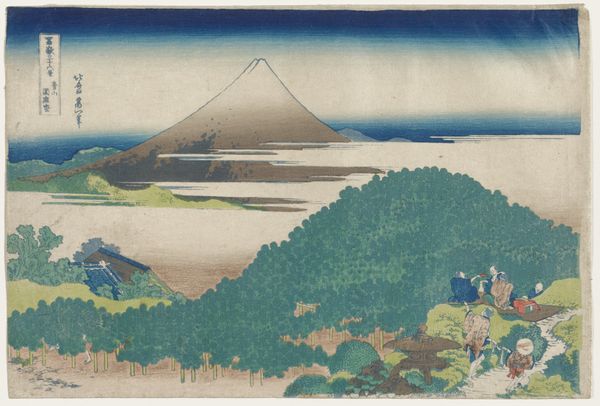
Autumn Moon at Atago Hill (Atago shugetsu), from the series "Eight Views of Edo (Edo hakkei)" c. 1804 - 1818
0:00
0:00
print, watercolor, woodblock-print
#
water colours
# print
#
asian-art
#
landscape
#
ukiyo-e
#
watercolor
#
woodblock-print
Dimensions: 9 3/8 × 14 1/8 in.
Copyright: Public Domain
Curator: I find myself drawn to the atmospheric stillness pervading this vista. Editor: That's Utagawa Toyohiro's "Autumn Moon at Atago Hill," from his "Eight Views of Edo" series, dating back to the early 19th century. It’s currently part of the Art Institute of Chicago's collection, rendered in woodblock print, a typical Ukiyo-e technique. What is particularly arresting about it, to you? Curator: Well, immediately, the pervasive pale, almost bleached quality of the colors. The light feels filtered, distant. And that horizon—it's less a firm boundary and more a hazy merging of water and sky. It's liminal. Editor: The composition definitely lends itself to that feeling. Note how the building, possibly a temple or teahouse, sits confidently on the right-hand side, grounding the viewer. But that confidence quickly dissipates as the eye travels left into the open, indeterminate space of the water. Do you think this adds to that liminal reading? Curator: Absolutely. The sharp lines and detail in the architecture contrast magnificently with the diffused watercolor washes depicting the landscape beyond. It sets up a powerful dialectic between the concrete and the ethereal. It almost feels like a meditation on presence and absence, seen and unseen. I love the gentle greens amongst the leaves contrasted to the structure’s flat ochre too. Editor: And it does it all with such restraint. It’s interesting how much visual information he omits, almost daring us to fill in the gaps with our imaginations. It speaks volumes about the Edo period and its artistic sensibilities. Did they do less and appreciate more? Curator: Perhaps. The concept of "Ma"—the importance of empty space—is essential to understanding traditional Japanese aesthetics, and it’s wonderfully captured here. But what about you? What impression does this piece leave you with, outside the formal analysis? Editor: For me, it evokes a sense of nostalgia. Looking at it, I can almost smell the damp earth, the faint scent of woodsmoke, hear the quiet murmur of conversation. It’s strange how art can become a portal to other times, other sensibilities, right? It's melancholic yet comforting. It whispers a story of a world long gone, yet eternally present in its beauty. Curator: Indeed. Art offers us echoes of worlds we have not known and memories we have not lived. A potent paradox.
Comments
No comments
Be the first to comment and join the conversation on the ultimate creative platform.
